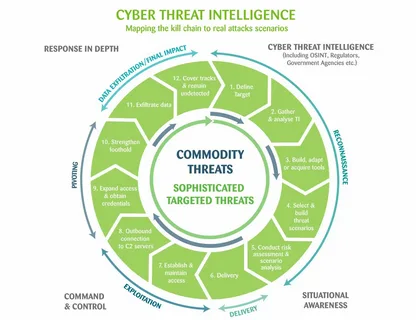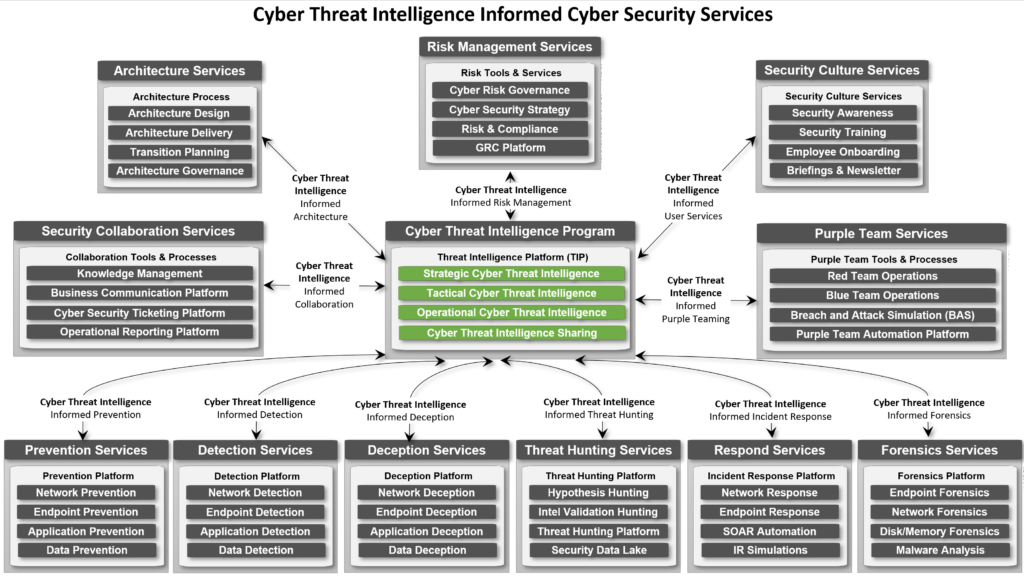
As cyberattacks grow in frequency and sophistication, it is crucial to have a comprehensive and standardized approach to understanding and mitigating these threats.
The Office of the Director of National Intelligence (ODNI) has developed a robust Cyber Threat Framework to help tackle these challenges effectively.
We will explore the ODNI Cyber Threat Framework, its key components, and its significance in combating cyber threats.
What is the ODNI Cyber Threat Framework?
The ODNI Cyber Threat Framework is a strategic approach developed by the Office of the Director of National Intelligence to facilitate a unified understanding of cyber threats.
It serves as a guideline for various agencies, organizations, and cybersecurity professionals to assess, categorize, and respond to cyber threats consistently and cohesively.

Critical Components of the ODNI Cyber Threat Framework
The ODNI Cyber Threat Framework comprises several key components designed to address different aspects of the cyber threat landscape. Let’s delve into the major components:
Cyber Threat Actors
The first component of the framework focuses on identifying and classifying different cyber threat actors. These actors range from individual hackers to state-sponsored groups, criminal organizations, or hacktivists. Understanding these actors’ motivations, capabilities, and tactics is crucial in building effective defence strategies.
Cyber Threat Capabilities
This component highlights the various capabilities possessed by cyber threat actors. It includes technical skills, tools, and resources used to launch cyberattacks. Understanding the capabilities of threat actors helps in anticipating and countering potential attacks.
Cyber Threat Infrastructure
Cyber threat actors rely on sophisticated infrastructures to orchestrate attacks. This infrastructure may consist of botnets, command and control servers, and other communication channels. Identifying and disrupting this infrastructure is vital to impede cyber threats.
Cyber Threat Vectors
Cyber threat vectors refer to the different methods and pathways through which attacks occur. Typical vectors include phishing emails, malware-laden websites, ransomware, and social engineering. Organizations can strengthen their defences by identifying these vectors and educating users about potential risks.
Cyber Threat Campaigns
Cyber threat campaigns refer to coordinated and sustained efforts by threat actors to achieve specific objectives. Understanding the scope and duration of these campaigns is essential to assess the severity of the threat and develop appropriate countermeasures.
Cyber Threat Indicators
Cyber threat indicators are specific pieces of information or patterns that suggest the presence of a cyber threat. These indicators can include suspicious IP addresses, malware signatures, or unusual network behaviour. Detecting and analyzing these indicators helps in early threat detection and response.
Cyber Threat TTP
Tactics, Techniques, and Procedures (TTPs) represent the methods and strategies cyber threat actors employ during their attacks. Analyzing TTPs allows security professionals to identify patterns and create effective defence mechanisms.
Cyber Threat Impact
This component assesses the potential consequences of cyber threats on targeted systems, data, and individuals. Understanding the potential impact helps prioritize response efforts and allocate resources efficiently.
Check out: Cyber Threat Intelligence Careers Available

Check out the Cyber Threat Intelligence Team
The Significance of the ODNI Cyber Threat Framework
The ODNI Cyber Threat Framework is crucial in strengthening national cybersecurity and protecting critical infrastructure. Here are some key reasons why the framework is significant:
Standardized Approach: The framework offers a standardized and structured approach to understanding and countering cyber threats. This common language enables various agencies and organizations to collaborate effectively.
Holistic Understanding: The framework provides a comprehensive view of the threat landscape by addressing multiple components of cyber threats. This holistic understanding helps in anticipating and responding to emerging threats more effectively.
Early Detection and Response: Through analyzing threat indicators and TTPs, the framework facilitates the early detection of cyber threats. This timely awareness enables proactive response measures before the attack causes significant damage.
Enhanced Collaboration: The framework fosters collaboration among government agencies, private sector entities, and international partners. This collaborative approach strengthens collective cybersecurity efforts.
Risk Management: The framework aids in identifying and prioritizing high-risk threats, allowing organizations to allocate resources to protect critical assets effectively.
Conclusion
The ODNI Cyber Threat Framework is crucial in strengthening cybersecurity measures in a rapidly evolving digital landscape.
The framework empowers organizations and security professionals to efficiently detect, mitigate, and respond to cyberattacks by providing a unified approach to understanding cyber threats and their components.
The ODNI Cyber Threat Framework remains indispensable in safeguarding national security and critical infrastructures as the cyber threat landscape continues evolving. Embracing this framework enables us to stay one step ahead of cyber adversaries and maintain resilience in the face of evolving cyber threats.
Leave a Reply